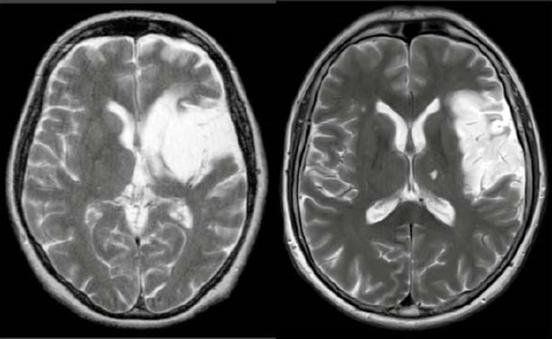Singing after stroke: Why rhythm and formulaic phrases may be more important than melody
23 Sep 2011
After a left-sided stroke, many individuals suffer from serious speech disorders but are often able to sing complete texts relatively fluently. Researchers at the Max Planck Institute for Human Cognitive and Brain Sciences in Leipzig, Germany, have now demonstrated that it is not singing itself that is the key. Instead, rhythm may be crucial. Moreover, highly familiar song lyrics and formulaic phrases were found to have a strong impact on articulation – regardless of whether they were sung or spoken. The results may lead the way to new rehabilitative therapies for speech disorders.
When a stroke damages speech areas in the brain's left hemisphere, sufferers often have severe difficulties speaking – a condition known as non-fluent aphasia. Sometimes the inability to speak spontaneously is permanent. However, there are frequent cases of aphasics who are able to sing song lyrics and formulaic phrases relatively fluently. Until now, this astonishing observation has been explained by the fact that the right brain hemisphere, which supports important functions of singing, remains intact. Singing was thought to stimulate areas in the right hemisphere, which would then assume the function for damaged left speech areas. A treatment method known as Melodic Intonation Therapy is based on this idea.
Recent research has shown that changes indeed occur in the right brain hemisphere of patients after singing formulaic phrases like 'How are you?' over a period of months. ''But this alone is not sufficient evidence that singing is an effective treatment for aphasics,'' says Benjamin Stahl, researcher at the Max Planck Institute for Human Cognitive and Brain Sciences in Leipzig. ''The formulaic phrases could just as easily be the cause, as similar areas of the right brain hemisphere are activated when such texts are produced.'' Moreover, one should not jump to conclusions, Stahl says: ''Changes in the right brain hemisphere are not necessarily the cause of improvement in a patient's articulation.''
To find out whether and how singing works, Stahl and colleagues conducted a study in which 17 stroke patients with resulting non-fluent aphasia had to articulate several thousand syllables, which were sung and recited with rhythmic or arrhythmic accompaniment. The texts selected were linguistically similar but varied greatly in their level of familiarity and how formulaic they were.
 |
| Excerpts from the texts employed: The familiar ('Hänschen klein...'), formulaic ('Guten Tag...') and non-formulaic ('Heller Wald...') texts were sung and recited under rhythmic or arrhythmic accompaniment. (© MPI for Human Cognitive and Brain Science) |
The results showed that singing was not the decisive factor for the patients. Singing the texts did not produce better results than speaking them rhythmically. ''The key element in our patients was, in fact, not the melody but the rhythm'' says Stahl. The positive effect was greatest in patients where deeper brain areas, known as the basal ganglia, were affected. These areas are known to be crucial for rhythmic processing.
However, the level of familiarity with the song lyrics and whether the texts contained formulaic phrases was found to be even more important. Producing formulaic phrases and well-known song lyrics may involve other brain mechanisms than spontaneous speech, the researcher assumes. Daily expressions like 'How are you?' are highly automatized at the motor level, and common song lyrics can be recalled from long-term memory. In other words, formulaic phrases and familiar song lyrics may be easier for a patient to articulate – regardless of whether they are sung or rhythmically spoken.
 |
Although the results do not allow direct conclusions for therapy, the beneficial effect of singing for aphasics is called into question. Indeed, the success of singing therapies may actually result from rhythm and formulaic phrases. Benjamin Stahl is presently conducting further studies which aim to tap into the resource of rhythmic and formulaic speech for rehabilitative therapies. This could offer exciting prospects for improving the quality of life for patients: ''Even small gains in the ability to speak can mean a lot to aphasics, who sometimes have been unable to communicate easily for years,'' the researcher says.






















